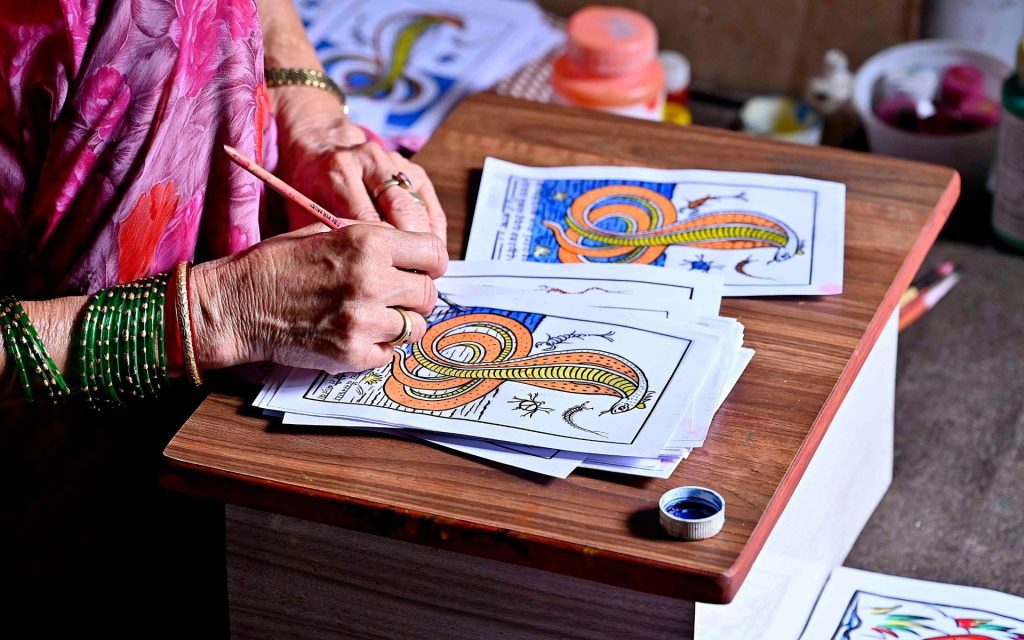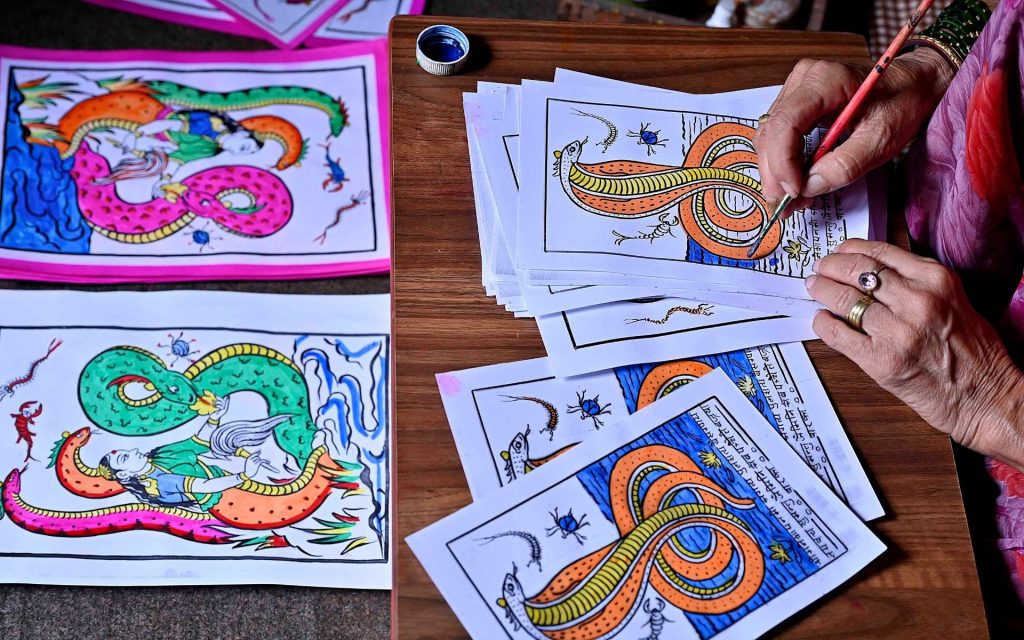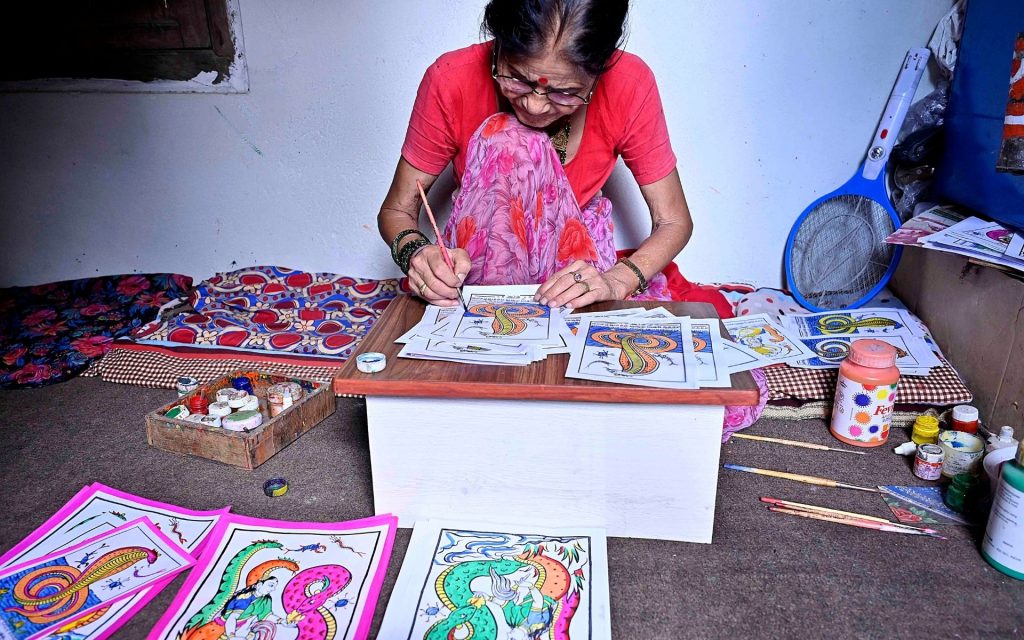

 20.86°C काठमाडौं
20.86°C काठमाडौं
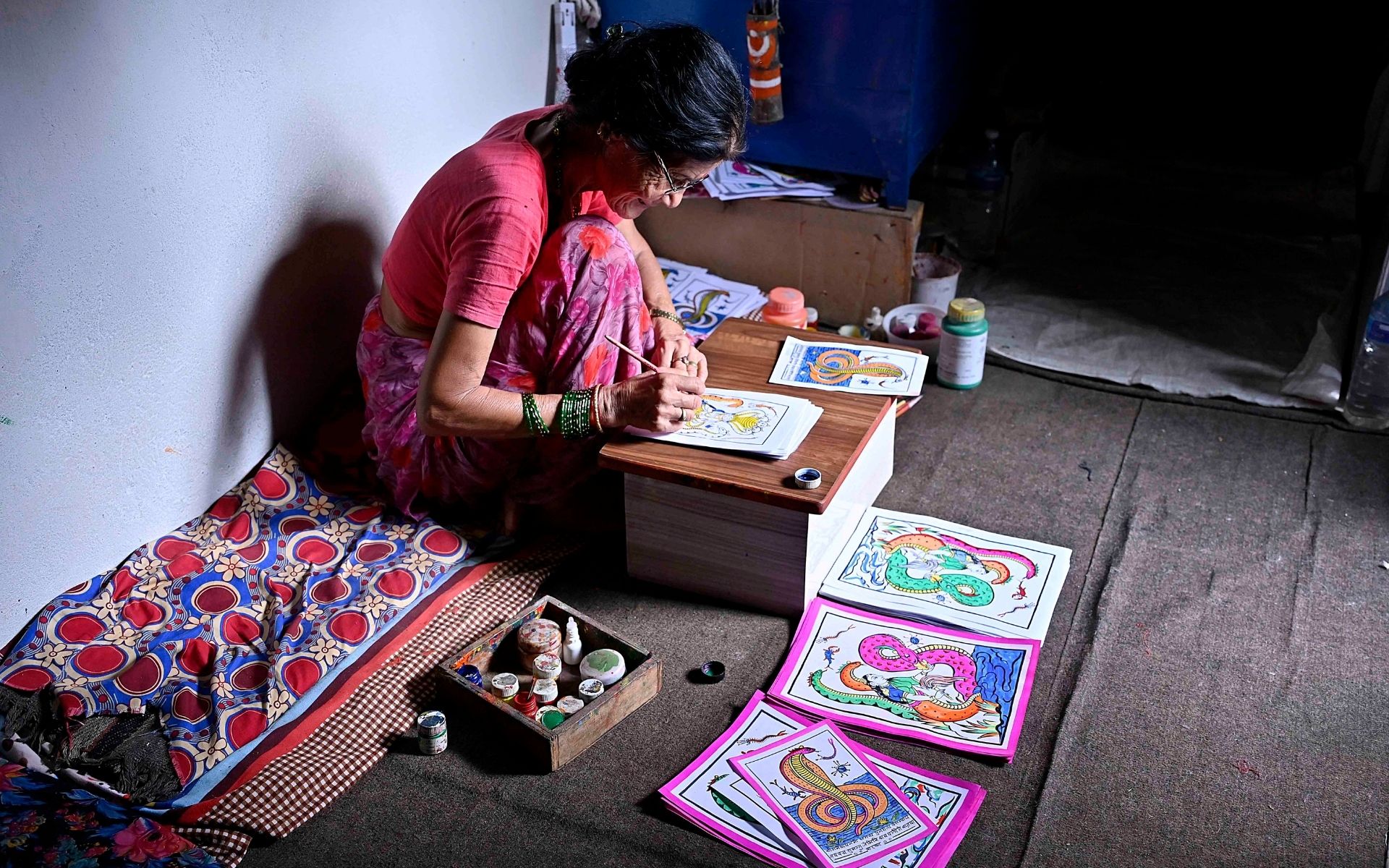
Kathmandu: Chet Kumari Chitrakar, a female artist from Bhaktapur, at 72 years of age, continues the generational tradition of painting posters for the Naag Panchami festival.
The festival of Naag Panchami has a deep-rooted history in the Hindu civilization, with a picture of Naag (a snake) placed above the doorway, later used to perform a puja. This festival is celebrated with the belief that the serpent’s image offers protection to the household.
However, the increasing preference for the mass-produced printed posters being used to perform a puja has resulted in a lesser demand for handmade paintings, losing the culturally significant element portrayed within the painting.
As one of the few female artists continuing this tradition, Chitrakar began painting these handmade posters at the age of 21, which was passed on to her by her mother-in-law. The Diplomat Nepal spoke to Chet Kumari Chitrakar to understand her art and the process behind it.
These handmade Naag posters consist of elements such as a scorpion, a spider, and a centipede, which the posters being sold in the market often lack. With each passing generation, we are often forgetting the meaning of these paintings, one that connects us to our roots. Each brushstroke in these posters holds significance to our traditional roots with a deeper symbolic meaning.
These are not just paintings; they are part of who we are.
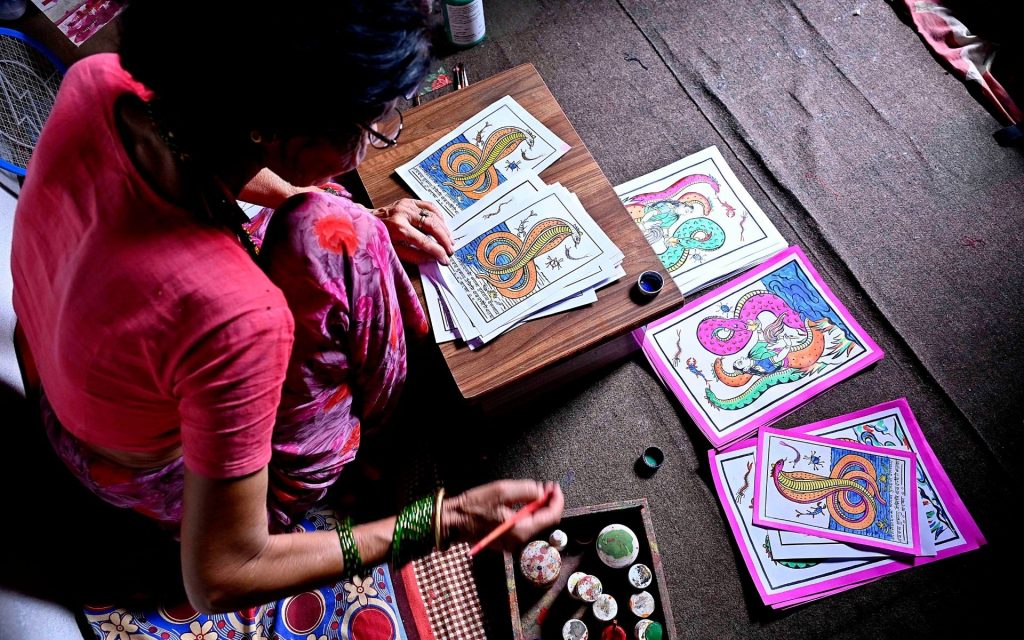
When I was in my birthplace in Kavre, I did not even know that such practices existed. It was when I got married and came here to Kathmandu that I got to know about it, seeing my mother-in-law perform this craft, she encouraged me to learn it, but I was always scared to do it. One day, upon trying to paint it, she saw me do it. She then told me to continue this tradition even when she died. So, every time I paint these, I feel her presence around me as she watches me do it.
I continue this not just because of the importance of this tradition, but also because of my mother-in-law’s encouragement, and I wish to continue doing this. For others to see and understand this as well.
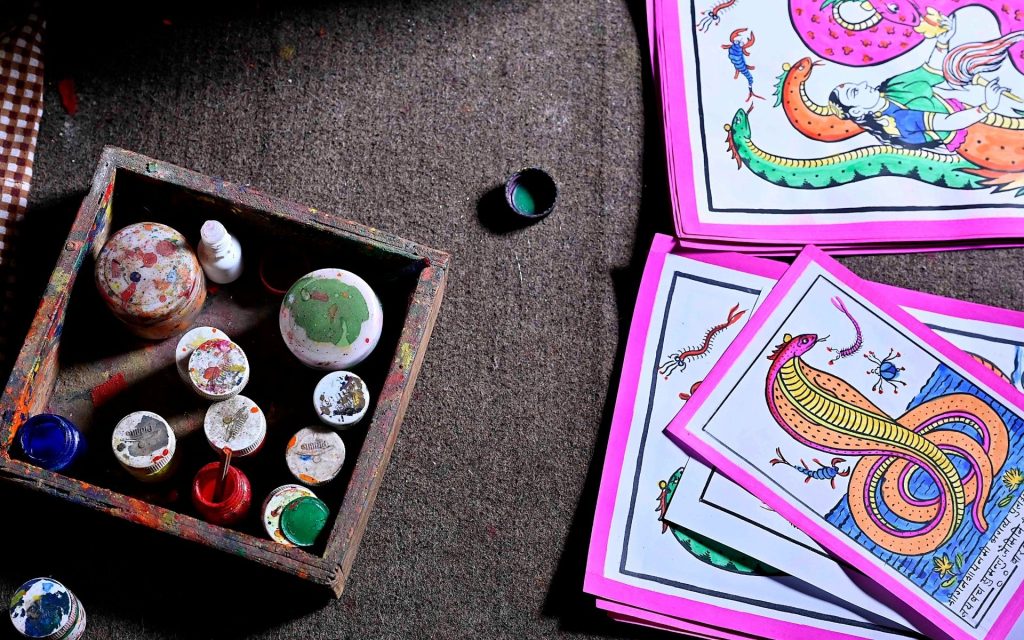
When we worship the Naag (the snake) in this festival, it protects us and our home from the negative forces, but we all have our preferences. The printed papers are more in demand because they are cheaper and easier to make, but the painted ones are each crafted with details, meaning, and through the passed-on generational traditional methods.
Whenever I paint these, there’s a part of me that listens to what God puts into my soul, and then I paint these. There is more meaning to what has been created with every brush stroke than those that are printed in large numbers.
I teach my grandsons and daughters that in life, we must learn a few skills in life. Even though they might pursue anything in life, they should always learn some skills, as you never know how they might be useful.
Just like I was encouraged by my in-laws, I pass on the same learnings too. My grandson, who just went abroad, and my granddaughter, who is still in Nepal, I always encourage them to teach what I have learned.
While festivals like Naag Panchami continue to be celebrated with fervor, the tradition of hand-painted posters that once adorned homes and temples is slowly vanishing. Yet for Kumari, each stroke is a form of devotion, a generational tradition not just to the festival, but to her passed tradition.
Here are some photos:
